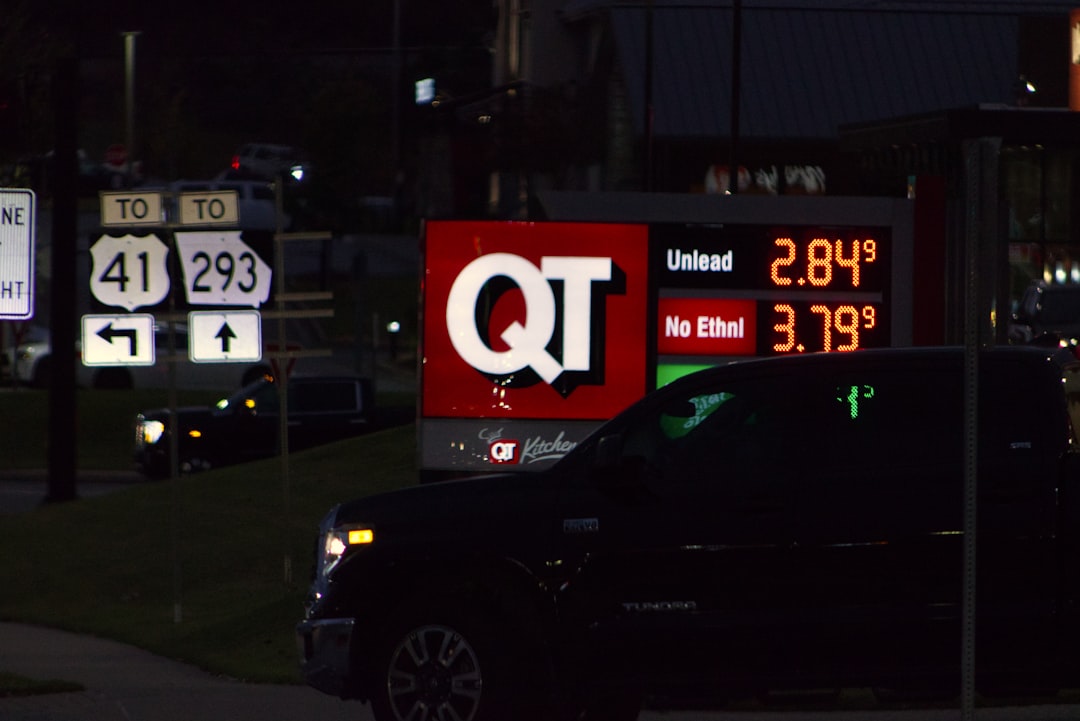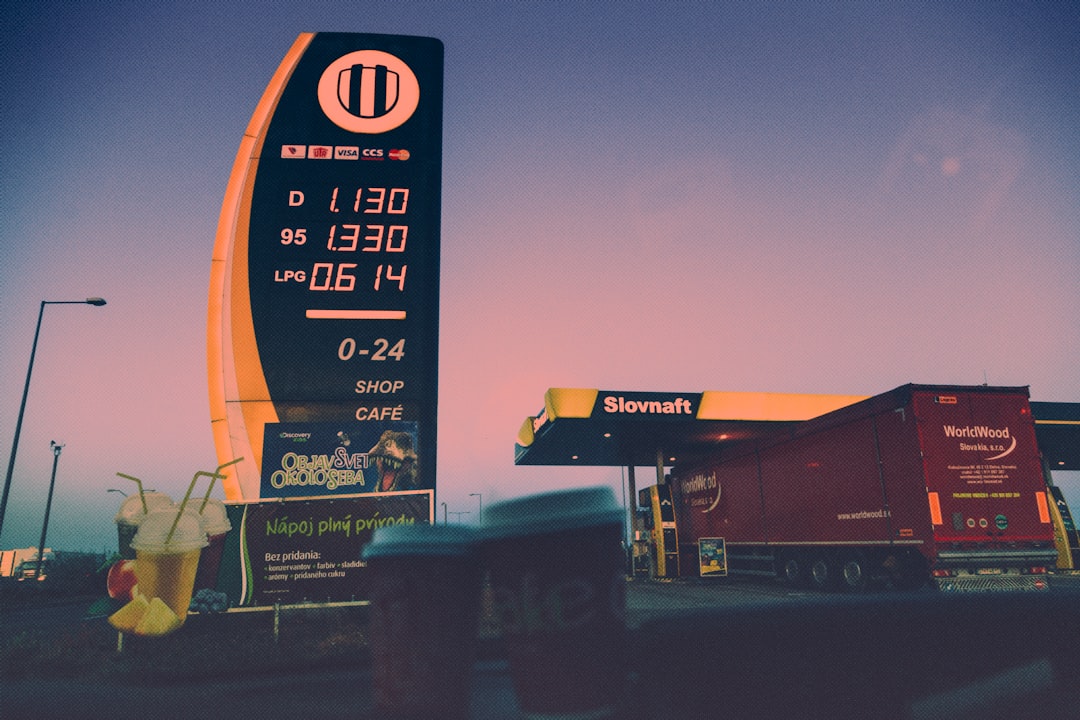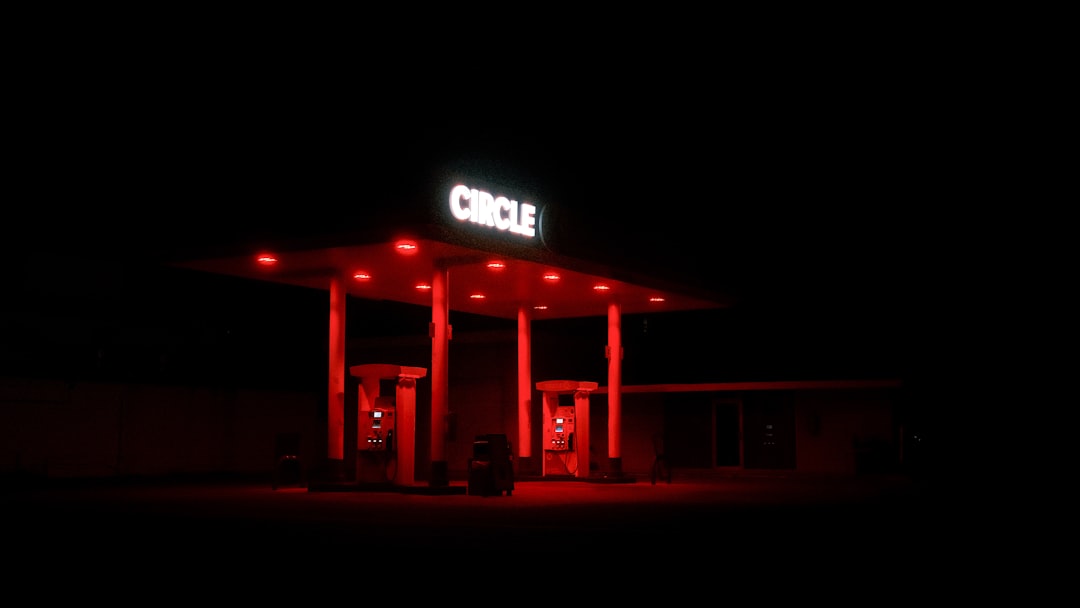

Engage prospects with a scan and streamline customer engagement with FREE QR code marketing tools by Sona – no strings attached!
Create a Free QR CodeFree consultation

No commitment

Engage prospects with a scan and streamline customer engagement with FREE QR code marketing tools by Sona – no strings attached!
Create a Free QR CodeFree consultation

No commitment
QR codes have transformed from a novelty into a strategic powerhouse, bridging offline engagement with online action for oil marketing companies. As a frictionless and data-rich method, QR codes enable seamless integration between traditional marketing and digital outcomes, allowing companies to connect print materials, billboards, and product packaging directly to interactive web experiences. Scanners do not need to download an app, reducing friction at the exact moment a customer is ready to act. For more on campaign tactics, see the Forbes guide.
Oil marketers can now deploy targeted content, streamline processes, and measure real-time ROI using QR codes. From supporting pipeline safety initiatives and promoting loyalty programs to collecting feedback efficiently from field teams, QR codes make engagement measurable and bring anonymous offline interactions into your digital funnel. Every scan becomes a signal, revealing intent and context that can be used for follow-up and retargeting.
With pressure to meet regulatory standards, sustainability goals, and drive digital transformation, oil marketing companies are adopting QR code workflows to future-proof their operations and campaigns. By integrating QR strategies, marketers can capture accurate touchpoints and eliminate lost opportunities from offline interactions. Consider the impact of sustainable QR codes as part of your ESG initiatives. The sections that follow detail practical ways to deploy QR codes and show how to convert more customers through smarter placements, better design, and connected analytics.

QR codes bridge the gap between physical touchpoints and digital outcomes, making it easier to accomplish goals like increasing conversions, brand engagement, and data capture. Analog processes such as printed brochures, paper feedback cards, and manual sign-up sheets often block momentum and lose data. A scan-first approach removes those hurdles, turning every surface into a direct path to conversion.
Begin by mapping the offline moments that matter in your business. Think about where customers, fleet managers, or dealers interact with physical assets like pumps, invoices, delivery slips, safety placards, or trade show banners. Each of those surfaces is a chance to convert curiosity into action. When a driver scans a pump-topper and instantly joins your loyalty program, or a procurement manager scans a brochure at a conference to request a bulk-fuel quote, you have created a measurable step in their journey that leads to revenue.
Define success metrics before you print. Conversions can include coupon redemptions, form completions, app downloads, safety acknowledgment forms, or demo requests. The most effective marketing teams set clear baselines, such as current sign-up rates from printed forms, then measure improvements after adding QR codes. Many teams see scan-to-form completion rates outpacing manual entries, since QR codes remove the need to type long URLs.
Design and placement matter. Codes should be visible, sized correctly, and paired with a concise, benefit-led call to action. Consider lighting, distance, and dwell time at each touchpoint. For example, a pump-topper code should be large enough to scan at arm’s length, while a countertop display can use a smaller code since customers are closer for longer.
By replacing analog workflows with measurable QR campaigns, oil marketers can eliminate missed high-value leads and drive better ROI from offline engagements. The results compound as more surfaces convert, more data flows into your systems, and more follow-up happens automatically.

Oil marketing companies operate across a mix of physical and digital environments, from forecourts and fleet facilities to trade shows and client meetings. The industry often depends on printed assets, safety documentation, and in-person service. QR codes solve the offline-to-online gap by making every physical touchpoint actionable, trackable, and updatable.
Customers and partners want speed and clarity. They may want to claim a loyalty reward, access SDS documents, schedule a delivery, or request a quote. A QR code provides the shortest path to the right digital experience, without asking anyone to search for a URL or download an app. This simplicity increases usage and reduces friction during moments of real intent.
When used consistently, QR codes transform static assets into interactive experiences that serve revenue goals, compliance needs, and customer satisfaction. They make it practical to measure the impact of print and in-person initiatives that once felt unmeasurable.

Different QR code formats support different objectives, and picking the right type improves user experience. For oil marketing workflows, formats that connect to forms, documents, and quick communications tend to drive the most value. Dynamic codes that can be edited and tracked are especially useful in regulated environments and long-running campaigns.
Static codes point to a fixed destination. They are suitable for evergreen content like a corporate homepage or a product PDF that rarely changes. Dynamic codes can be updated post-print, can carry UTM parameters, and can log scan data such as time and location. In most marketing and operational scenarios, dynamic codes are the better choice due to their flexibility and analytics.
With Sona QR, you can generate, manage, and track any of these formats in one place, then update destinations as your campaigns evolve.

Growth in oil marketing comes from being where the customer is and making it easy for them to act. The most effective placements put QR codes in the natural path of customers and partners. Think about dwell time, visibility, and intent. If a driver is waiting at a pump or standing at the checkout counter, those are prime opportunities for conversion. For sector-specific ideas, review oil and gas marketing.
B2B interactions offer their own moments of intent. When a procurement manager is reading a spec sheet at a trade show, or a fleet supervisor is checking a tank, a well-placed QR code can move them to a quote request, a reorder flow, or a training module. Each placement should have a clear job to do, tailored to the audience at that location.
By aligning code placement with the customer mindset at each location, you turn awareness into action and capture data that fuels smarter marketing.

QR codes are versatile assets that serve both retail and B2B needs. They can activate promotions at the forecourt, streamline safety compliance in the field, and provide service shortcuts that drive retention. Prioritize use cases that have measurable outcomes and a clear next step in your funnel. For inspiration, see these QR code examples.
Below are representative examples that map to common customer interactions. Each use case includes what it does, where it goes, and the outcome you can expect when it is executed well.
By choosing a few high-impact use cases to start, you can prove value quickly, then expand QR coverage across your customer journey and operational workflows.
Each QR scan is a signal that reveals intent data, timing, and context. Scans at a pump with a CTA about discounts indicate retail drivers interested in savings, while scans on a bulk-fuel brochure at a trade show indicate a B2B decision-maker evaluating options. If you create distinct codes for different journey stages and placements, you can segment audiences automatically and retarget them with higher relevance.
The key is to tag each QR code by use case, channel, and funnel stage, then connect that data to your CRM and ad platforms. With Sona QR, scans can flow into tools like HubSpot, Salesforce, and Meta Ads as events that trigger follow-up. This creates a responsive marketing system that turns anonymous interest into personalized nurturing.
Relevant distinctions for oil marketing include retail drivers versus commercial fleet managers, procurement decision-makers versus field technicians, and safety officers versus operations leaders. When your follow-up reflects these roles and contexts, conversion rates rise.
QR codes are not a standalone tactic. They are connectors that join your offline visibility to your online performance engine. When you place codes across your channels and coordinate the data in a central platform, you unlock a full-funnel view and create smoother experiences from awareness to purchase and retention.
Oil marketing teams typically rely on print, on-site signage, events, and direct mail, supplemented by digital channels like email and social. QR codes add a precise measurement layer across those physical channels, revealing what works and allowing rapid optimization. The result is higher ROI because you invest in placements that prove their value.
With a centralized platform like Sona QR, you can manage all codes, monitor performance across channels, and sync scan data with your CRM and ad platforms. This creates a connected journey that keeps prospects moving and prevents drop-offs.
Executing a QR program is straightforward if you follow a disciplined process. The checklist below helps you move from concept to live deployment with confidence. Each step builds on the last, ensuring your codes are effective in the field and measurable in your systems.
Start with a clear business goal. Decide whether you are driving loyalty sign-ups, capturing feedback, collecting quote requests, or digitizing safety acknowledgments. Match each goal to a location where your audience already spends time, such as a fuel pump, invoice, or event booth.
Choose static codes for unchanging content that does not require analytics. Choose dynamic codes for campaigns where you need tracking, retargeting, and the ability to update destinations without reprinting. Most marketing and safety deployments benefit from dynamic codes.
Make your code scannable and on-brand. Add a frame and a concise CTA that sets the expectation, such as “Scan for SDS” or “Scan to Save Today.” Ensure contrast is high, quiet zones are preserved, and size matches the scanning distance.
Roll out the campaign across the surfaces you identified. Use unique codes for each placement so you can compare performance and attribute outcomes precisely. Train staff to point out the codes and explain the benefit to customers.
Monitor scans, completion rates, and downstream outcomes like new accounts or orders. Analyze results by placement, creative, and time of day. Use insights to improve CTAs, reposition codes, or update destinations for better conversion.
With a smart platform such as Sona QR, this process is faster and more reliable. You can automate follow-up, run experiments, and tie scans to revenue in your attribution stack.
QR codes are powerful because they do not just drive engagement, they produce data that links real-world interactions to business outcomes. For oil marketing teams, this is vital since so many touchpoints are physical. The right analytics transform scans into insight, then into action. Sona is an AI-powered marketing platform for identity resolution, data activation, and revenue attribution that can connect these dots end-to-end. For methodology, see offline attribution.
Start by capturing the basics for each scan, such as timestamp, device type, approximate location, and campaign source. Then connect those scans to events like form submissions, quote requests, or orders. Over time, you build benchmarks for scan-to-lead and lead-to-order conversion by channel and placement. This helps you shift spend to the most productive surfaces.
When you measure from scan to revenue, QR campaigns become part of your performance marketing strategy, not just an add-on. This rigor drives compounding improvements and clearer ROI.
Once you have proven a few high-impact use cases, scale your QR strategy with best practices that improve data quality and conversion rates. The goal is to make every scan as actionable as possible, while maintaining flexibility to optimize quickly.
Invest in staff training and customer education. QR codes work best when people know exactly why to scan and what happens next. Small interventions such as cashiers pointing to a rewards QR or drivers seeing a clear benefit statement can increase scan rates significantly.
These practices transform every offline touchpoint into a measurable, conversion-ready opportunity. Start creating QR codes for free.
Oil marketing companies must modernize to meet regulatory, efficiency, and marketing demands in a changing landscape. Persistent challenges like missing high-value prospects, poor engagement visibility, and incomplete data can be addressed with QR codes, which seamlessly unify offline and online interactions. By integrating QR codes, oil marketers can track, optimize, and scale their best-performing campaigns, reducing churn and capturing every opportunity across the supply chain.
Getting started is simple. Identify one or two high-impact placements, such as pump-topper loyalty enrollment or invoice-linked feedback, then launch with dynamic codes and clear CTAs. Use Sona QR to manage codes, monitor performance, and sync scan data to your CRM. As results roll in, expand to additional use cases such as B2B reorder flows and safety acknowledgments, building a connected funnel that turns scans into revenue and long-term relationships.
QR codes have transformed oil marketing companies from traditional outreach methods into dynamic, measurable conversion engines. Whether it’s driving new customer acquisition, enhancing the purchase experience at fuel stations, or delivering targeted promotions, QR codes turn static advertisements into interactive, data-driven opportunities that boost sales and customer loyalty. Imagine knowing exactly which campaigns lead customers to your pumps and being able to optimize those efforts instantly.
With Sona QR, oil marketing companies can create dynamic, trackable QR codes in seconds, update campaigns effortlessly without reprinting, and link every scan directly to revenue outcomes. This means no wasted materials, real-time insights, and more effective marketing spend. Start for free with Sona QR today and transform every scan into a powerful step toward increased conversions and sustained growth.
Oil marketing companies can improve operations by using QR codes to digitize analog processes, enable seamless offline-to-online engagement, track customer interactions, and streamline workflows such as loyalty enrollment, safety compliance, and reorder requests.
Best practices include choosing dynamic QR codes for flexibility and tracking, designing codes for visibility and context, placing codes on high-traffic materials, defining measurable conversion goals, testing across devices and environments, and integrating scan data with CRM and marketing platforms.
QR codes enhance safety and efficiency by providing instant access to real-time protocols, safety data sheets, and incident response steps, enabling digital acknowledgments of safety forms, and streamlining training and certification processes with trackable microlearning modules.
Real-world ROI examples include increased loyalty program enrollments and coupon redemptions at pump-toppers, higher survey response rates from receipt codes, shorter sales cycles and increased reorder frequency from B2B quote requests, and improved compliance documentation and training completion rates.
Oil marketing companies can implement sustainable marketing by using QR codes to replace paper forms and printed materials, incorporating sustainable QR code designs as part of ESG initiatives, and updating digital content dynamically to reduce the need for reprints and minimize waste.
Use Sona QR's trackable codes to improve customer acquisition and engagement today.
Create Your FREE Trackable QR Code in SecondsJoin results-focused teams combining Sona Platform automation with advanced Google Ads strategies to scale lead generation

Connect your existing CRM

Free Account Enrichment

No setup fees
No commitment required

Free consultation

Get a custom Google Ads roadmap for your business






Launch campaigns that generate qualified leads in 30 days or less.
